Source: NPR/The Kitchen Sisters July 31, 2008
Listen to the story.
 |
The 1967 Rice-A-Roni ad campaign on the San Francisco cable car.
Todd Lappin/TelstarLogistics |
Nikki sat down next to this story at an NPR event where we played our Hidden Kitchen episode "The Birth of the Frito," about the origin of the iconic corn chip. At the dinner, Lois DeDemenico, 80, told Nikki that she had been part of the birth of Rice-A-Roni.
Lois began to tell a story about San Francisco in the 1940s and the convergence of a Canadian immigrant bride, an Italian-American pasta family, and a survivor of the Armenian genocide – all of which led to the creation of "The San Francisco Treat."
We followed Lois, a philanthropist and widow of Tom DeDomenico, one of the founders of Golden Grain Macaroni Co., to her home in Oakland, Calif., to chronicle this hidden kitchen.
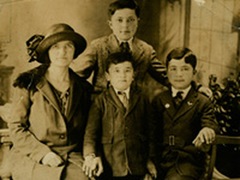 |
The Captanian family in New York in 1921: Pailadzo, Gilbert, Aram and Herant.
Courtesy of Captanian Family |
Lois had long ago lost touch with Pailadzo Captanian, the woman who in the 1940s had taught her to make Armenian rice pilaf — the recipe that would inspire her husband's family to create a side dish that gave Kraft Macaroni & Cheese a run for its money in the 1950s, when rice was rarely found on the American dinner table.
We began searching for the family of Pailadzo Captanian and found her grandson, Ted, who came bearing a translated version of the unique memoir his grandmother wrote of her harrowing exodus from Armenia, a pile of photographs, and a family pilaf recipe passed down from "Grandma Cap."
Mrs. Captanian's Kitchen
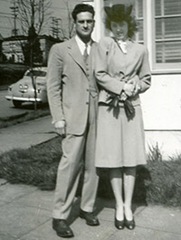 |
Tom and Lois DeDomenico in San Francisco, shortly after their marriage.
Courtesy of Lois DeDomenico |
Lois grew up in Edmonton, Canada, and met her husband, Tom, in San Francisco in 1944. Tom's father, an immigrant from Italy, had a pasta company in San Francisco, where Tommy worked with his brothers.
There was very little housing available in San Francisco after World War II. So when Mrs. Captanian advertised a room to rent, Lois and Tom moved in with her.
"Mrs. Captanian, I had a liking for her right away. So we moved in. Tommy would work until about 7 o'clock at the pasta factory and I was alone a lot," Lois said. "I was only 18 and I was pregnant. And I had kitchen privileges. Well, I really wasn't much of a cook. And here was this Armenian lady, probably about 70 years [old], making yogurt on the back of the stove, all day, every day. I didn't even know what the word 'yogurt' meant."
Mrs. Captanian taught Lois how to make paklava (baklava), soups and her specialty, Armenian pilaf.
"We would bring her Golden Grain vermicelli from the factory," Lois said. "She wanted us to break it as small as rice if we could."
During those long kitchen afternoons, Lois listened as Mrs. Captanian told her life story — about the Armenian genocide, her husband's death, the separation from her two young boys and her trek from Turkey to Syria in 1915, along with thousands of other women and children who had been deported. Mrs. Captanian chronicled these events in her 1919 book, Memoires D'une Deportee.
'This Would Be Great In A Box'
When the DeDomenicos moved into a place of their own, Lois often cooked Mrs. Captanian's Armenian pilaf. At a family dinner one evening, after a long day at the pasta factory, Tom's brother Vince stared at his dish of pilaf and said, "This would be great in a box."
Golden Grain had a test kitchen at the factory. It took three or four years to adapt the recipe for one-pot cooking.
"There were not many packaged side dishes in the market in 1955," said Dennis DeDomenico, Tom and Lois' son. "Everything was being geared toward less time in the kitchen. Major appliances like dishwashers and garbage disposals were starting to come in. The convenience factor was everything."
All that was missing was a name.
"We said, 'Well, what is the product? The product is rice and macaroni. Why don't we call it Rice-A-Roni?' Didn't quite sound right. Who'd ever heard of rice and macaroni being together? Still, the name had a ring to it," Tom DeDomenico said, in an oral history recorded by the Bancroft Library in 1988.
Memoirs Of Pailadzo Captanian
Following the story, we were able to find Mrs. Captanian's grandson, Ted, who works as a contractor in Novato, Calif., north of San Francisco.
"We called her Grandma Cap," Ted said. "She baby-sat us when we were 4 or 5 years old. She'd always be wanting to cook us stuffed grape leaves, paklava, rice pilaf."
Ted's father was born during the Armenian deportation trek in 1915. Pailadzo Captanian walked for months, pregnant and with little food and water, until she reached Aleppo, Syria. There, she gave birth to Ted's father.
Meline Pehlivanian, a specialist on Armenia and Turkey at the Berlin State Library, stumbled upon Captanian's memoir 15 years ago.
"It is a rare book, because we have very [few] eyewitness accounts of this time," Pehlivanian said. "Most accounts were written 30 or 40 years after the events." The volume was published in French, the language Mrs. Captanian wrote in.
In 1919, Mrs. Captanian was reunited with her two other sons; she had entrusted them to a Greek family before her deportation. The family then moved to the United States, where she worked as a seamstress, sewing draperies for President Franklin D. Roosevelt's Hyde Park home in New York. She put her boys through school and, after World War II, she moved to San Francisco, where Ted's father had settled.
A Culinary Melting Pot
Ted Captanian remembers seeing the Rice-A-Roni commercials on television as a child.
"Every time we heard that jingle, my father would say, 'You know your grandmother gave a rice recipe to the people who started that company. So every time you hear it, think of her,' " Ted said. "To be honest, we kind of thought — could that possibly be true? Could this iconic American dish actually be attributed to some recipe my grandmother gave years ago?"
Lois says she still makes pilaf the way Captanian taught her.
"The impact she had on me and my life," Lois said. "I only lived there four months, but it was four months that brought all these things together: myself from Canada; Tommy, Italian; Mrs. Captanian, Armenian. All that converging in San Francisco in 1946, and out of that comes Rice-A-Roni."
Pailadzo Captanian's Rice Pilaf
July 30, 2008 7:19 PM
Ingredients
Rice Mixture:
- 7/8 cup long grain white rice
- 1/8 cup fideo capellini crushed into small pieces
- ½ cube butter
- ½ large onion, chopped
- ½ 4.5 oz jar sliced "Green Giant" mushrooms packed in water and drained. (mushrooms can be substituted with any other canned mushrooms.)
- 1 tbsp pine nuts
Broth:
- 2 ½ cups boiling water
- 2 ½ chicken bouillon cubes
- ½ tbsp dried parsley flakes
- Salt and pepper to taste.
- (The broth should taste somewhat salty before it is added to rice mixture)
Pailadzo Captanian's rice pilaf is a favorite dish at Captanian family gatherings. She passed her pilaf recipe down to her daughter-in-law Mellie Captanian in the late 1940s. In 1965, Jacqueline Captanian, who was then dating Mellie's son Barry, asked for the recipe for Barry's favorite dish: rice pilaf.
Jacqueline and Barry Captanian have now been married for 40 years. In that time, Jacqueline says, she perfected the dish to the point that it became her job to make it for all their family gatherings.
"We are not sure if Pailadzo included mushrooms or pine nuts in her version of this recipe, but the following is the way I learned it from Mellie in 1965," Jacqueline Captanian said.
Directions:
Melt the butter over medium high flame in a medium sauce pan and add rice and fideo cappellini and stir constantly, cooking until it starts to turn golden.
Add chopped onion and cook until almost clear.
Add mushrooms and pine nuts.
Stir constantly over medium high flame, until the mixture is golden brown with dark flecks of fideo capellini.
Meanwhile, make broth by heating water to boiling and adding bouillon cubes, parsley flakes, salt and pepper (you can heat this in the microwave or on the stove)
Stir to dissolve the bouillon.
Add boiling broth to browned rice mixture, (note: broth /rice mixture should taste slightly salty), return to a bowl, stir once, and cover, then turn down the hat to a low simmer. Do not lift the cover for 35 minutes.
Remove from the heat, fluff with a fork; let rest until ready to serve.
P.S. Cover pan with a cloth to keep warm (If I am traveling with the rice over a period of several hours, I wrap the pan in several beach towels and it will stay nice and warm).
P.P.S To double the recipe: Use 7/8 cube butter; 4 7/8 cups water and 5 chicken bouillon cubes and cook rice for 37 minutes. (You can double all the other ingredients).
If you follow these directions exactly, you should have a perfect pilaf every time. But avoid the urge to peek at the cooking rice. Lifting the cover during cooking will affect the texture and fluffiness of the dish.
About The Music
July 30, 2008 7:47 PM
The process of finding music for these Hidden Kitchen stories always has some twists. I went to return a record to TV producer and record collector Harry Bernstein and was met at the door by him, his mother-in-law, and his dog, Anoush — it means "sweet" in Armenian, he told me. I started telling them about the Birth of Rice-A-Roni and its Armenian pilaf roots. Harry told me his mother-in-law is Armenian, and is always making yogurt. He also said he had a pile of Armenian records we could borrow for the story.
On another front, we had recently been gathering music for our Parsi Hidden Kitchen story, Sugar in the Milk, and we'd been listening to a lot of exquisite Persian music from the World Village collection. The song "Mama," from Endless Vision, a collaboration between the Armenian duduk player Djivan Gasparyan and Hossein Alizadeh, was especially haunting, but there was no place for it in Niloufer King's piece. In this story, it fit like a glove.
Record producer and world music archivist, Joe Boyd, also had a deep stack of Armenian music for us to cull through. "Tears of Dignity" and "Uscila" by Arto Tuncboyaciyan both come from his collection of 30,000 records.
While digging around for songs for the Italian-American pasta part of this story, like the crazy organ solo in Rosemary Clooney's Mambo Italiano, we discovered that novelist William Saroyan and fellow Armenian Ross Bagdasarian (who later created The Chipmunks), wrote "Come On-a My House," based on an old Armenian children's rhyme.
As the song goes: "Come on a My House, I'm gonna give you candy. Come on a my house, I'm gonna give a you apple a plum and apricot-a too...Figs and dates and grapes and cakes...marriage ring and a pomegranate too ah..."
Story Credits
Produced by The Kitchen Sisters (Nikki Silva & Davia Nelson) in collaboration with Laura Folger, Nathan Dalton, and interns, Alessandra Wollner and Eloise Melzer. Mixed by Jim McKee.
Web Resources




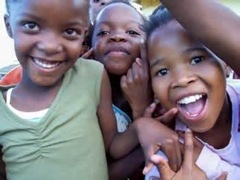




![clip_image001[6] clip_image001[6]](http://lh3.ggpht.com/-h06SHAIEO94/Ue3xRVqwbGI/AAAAAAAACek/I5TPqFEpL9k/clip_image001%25255B6%25255D%25255B4%25255D.jpg?imgmax=800)
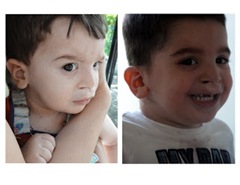
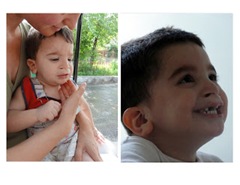

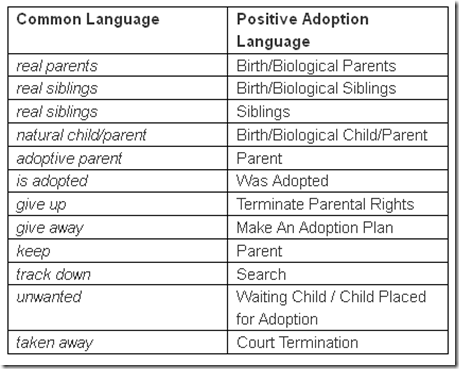


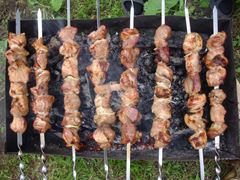
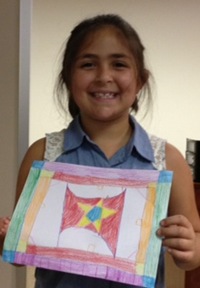

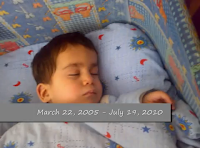
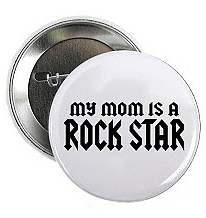



![clip_image002[1] clip_image002[1]](http://lh3.ggpht.com/-4LVyRjNbx8M/UeCm-g8QuhI/AAAAAAAACa8/eRAmloSHYuo/clip_image002%25255B1%25255D%25255B4%25255D.jpg?imgmax=800)